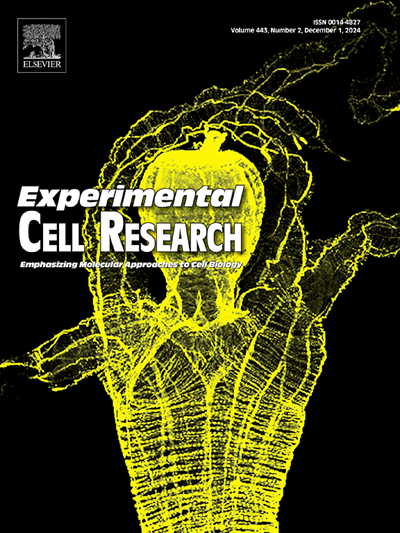视网膜短期暗适应中的突触神经胶质:细胞增殖和细胞结构。
IF 3.3
3区 生物学
Q3 CELL BIOLOGY
引用次数: 0
摘要
具有独特生命周期的鱼类为研究视网膜可塑性提供了有价值的见解,揭示了环境适应、细胞增殖以及潜在再生的机制。黄鳝所处环境因子的变异性是形成其神经系统可塑性等特征的一种强大的选择压力。这有助于适应它们的极端条件,包括池塘干涸时亮度下降。特别的是,研究表明,在30天的亮度下降后,黄花蒿的视网膜会通过加剧细胞增殖来做出反应。现在,我们的目标是确定视网膜中参与短期反应的细胞成分。为此,我们进行了5-溴-2'-脱氧尿嘧啶(BrdU)实验,将成年鱼暴露在短时间(11天)的持续黑暗中。引人注目的是,在对照条件下,在分化视网膜的细胞核和神经节细胞层中检测到神经发生。我们观察到持续黑暗对视网膜内核层细胞增殖的影响和视网膜细胞结构的变化,细胞团位于视网膜内丛状层。此外,在黑暗中检测到BLBP(脑脂结合蛋白)的增加,这与未成熟和重新激活的神经胶质细胞有关。因此,我们的研究结果表明,A. charrua视网膜可以通过快速激活INL中的祖细胞(即m本文章由计算机程序翻译,如有差异,请以英文原文为准。

Müller glia in short-term dark adaptation of the Austrolebias charrua retina: Cell proliferation and cytoarchitecture
Fish with unique life cycles offer valuable insights into retinal plasticity, revealing mechanisms of environmental adaptation, cell proliferation, and thus, potentially regeneration. The variability of the environmental factors to which Austrolebias annual fishes are exposed has acted as a strong selective pressure shaping traits such as nervous system plasticity. This has contributed to adaptation to their extreme conditions including the decreased luminosity as ponds dry out. In particular, the retina of A. charrua has been shown to respond to 30 days of decreased luminosity by exacerbating cell proliferation Now, we aimed to determine the cellular component of the retina involved in shorter-term responses. To this end, we performed 5-bromo-2′-deoxyuridine (BrdU) experiments, exposing adult fish to a short period (11 days) of constant darkness. Strikingly, in control conditions, neurogenesis in the inner nuclear and ganglion cell layer in the differentiated retina was detected. In constant darkness, we observed an effect on inner nuclear layer cell proliferation and changes in retinal cytoarchitecture of the retina with cell clusters located in the inner plexiform layer. Additionally, increased BLBP (brain lipid-binding protein) presence was detected in darkness, which has been previously associated with immature and reactivated Müller glia. Thus, our results suggest that the A. charrua retina can respond to environmental changes via rapid activation of progenitor cells in the INL, namely the Müller glia This leads us to hypothesize, that cell proliferation and neurogenesis might contribute to the responses to the functional needs of organisms, potentially playing an adaptive role.
求助全文
通过发布文献求助,成功后即可免费获取论文全文。
去求助
来源期刊

Experimental cell research
医学-细胞生物学
CiteScore
7.20
自引率
0.00%
发文量
295
审稿时长
30 days
期刊介绍:
Our scope includes but is not limited to areas such as: Chromosome biology; Chromatin and epigenetics; DNA repair; Gene regulation; Nuclear import-export; RNA processing; Non-coding RNAs; Organelle biology; The cytoskeleton; Intracellular trafficking; Cell-cell and cell-matrix interactions; Cell motility and migration; Cell proliferation; Cellular differentiation; Signal transduction; Programmed cell death.
 求助内容:
求助内容: 应助结果提醒方式:
应助结果提醒方式:


